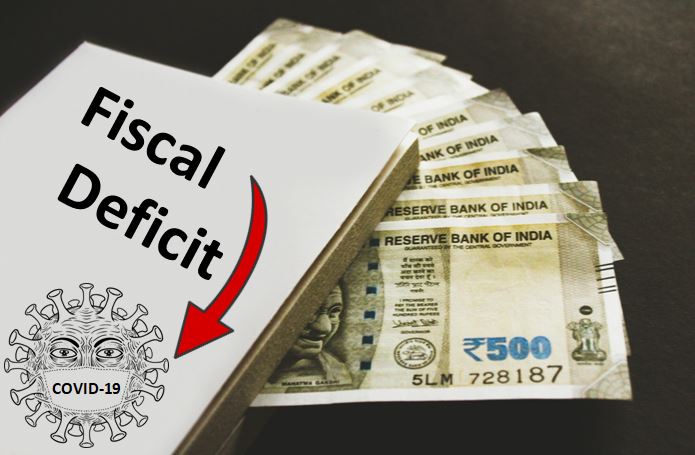India’s Fiscal Deficit and COVID-19

The government has recently extended the lockdown period to another 15 days till 3rd May which was started on 24th March. Unprecedented support is being provided to households, firms, and financial markets which is crucial for a strong recovery but there is considerable uncertainty about what the economic landscape will look like when we emerge from this lockdown. Recently, the Government has provided an economic stimulus plan of $22.6. It will provide direct cash transfers and free food to the poor, thereby offering relief to millions of poor people hit by a nationwide lockdown caused by the COVID-19 pandemic. It also provides medical insurance for medical staff, and a temporary regulatory amendment for employees of small companies to dip into their pension fund to fund their expenditures in the meantime.
While presenting the Budget, The Finance Minister estimated the fiscal deficit for FY 2019-20 at 3.8%( revised estimate) and pegged it at 3.5% (budget estimate) for FY 2020-21. However, After the impact of COVID-19 on the Indian economy, India's fiscal deficit in 2020-21 may rise up to 6.2 percent of the GDP from 3.5 percent government estimate as a fallout of the COVID-19 economic stimulus package. This rise in fiscal deficit is predicted by Fitch Solutions. The coronavirus pandemic has impacted sectors like trade, hotels, transport, and communication and push India's fiscal deficit to 3.88 percent of GDP this fiscal. (Fiscal deficit is the difference between total revenue and total expenditure of the government. It is an indication of the total borrowings needed by the government)
The pandemic has caused closures of business and factory outlets, thereby stopping global manufacturing and supply networks. Industries dealing with electronics, the auto sector, medicals and supplies, consumer deliverables are facing significant impact. Interruption in the businesses due to lockdown and its ripple effects will put revenue under great pressure in an already fragile economy like India. It might force the Indian Government to look towards borrowing from external forces like the International Monetary Fund, World Bank, etc.
Fiscal deficit is going to rise due to the weaker collections of revenue as a result of a sudden stop in economic activities. The pandemic will also impact heavily on personal and corporate income taxes for the year. However, the Government will have higher expenditures to lessen the impact of the COVID-19 pandemic. The government is likely to defer taxes for some industries like aviation, hospitality and small companies, which have been hurt the most by the lockdown which will increase the deficit. The RBI is also likely to ease bad-loan classification norms and allow banks to raise their lending ceiling to help companies.
The FRBM Act provided an escape clause that the RBI can be the primary issuer of central government securities in case the government exceeds the fiscal deficit target on “grounds of national security, the act of war, national calamity, the collapse of agriculture severely affecting farm output and incomes, structural reforms in the economy with unanticipated fiscal implications “etc. Monetization of fiscal deficit means that the central bank prints more money to pay for government debt by buying up government bonds and booking the same on its balance sheet.
Hence, a series of unprecedented efforts are needed from the Government to deal with this catastrophe while keeping a check the fiscal deficit as its rise causes a reduction in GDP. Also, collaboration among industries is required to develop innovative ways of dealing with the pandemic.
Like Our Page To Get Blogs & Market Updates



